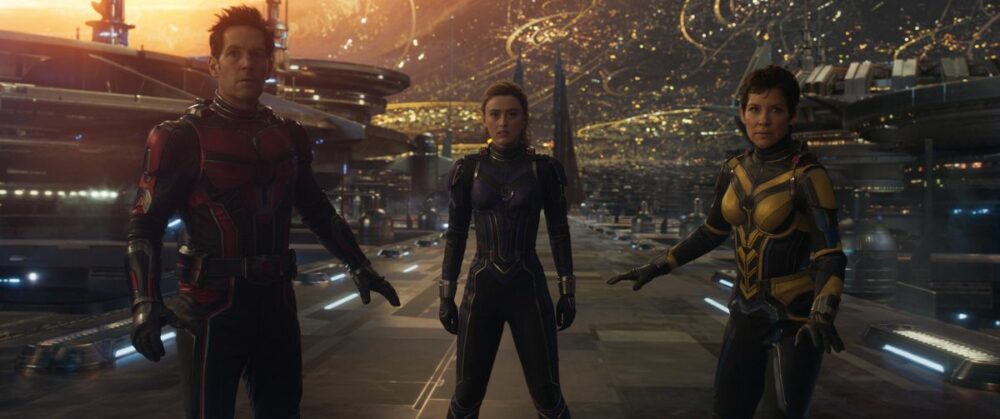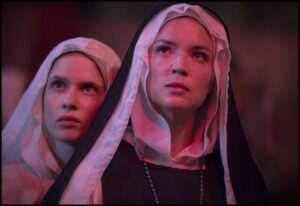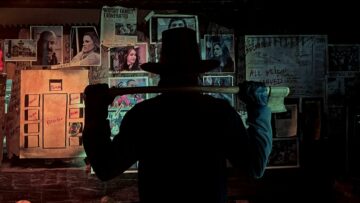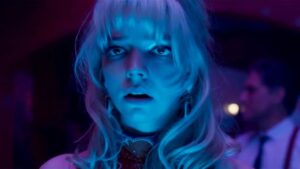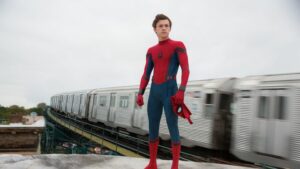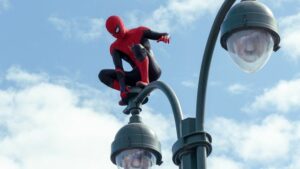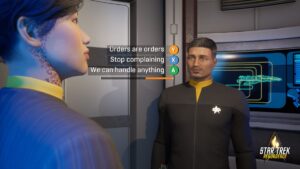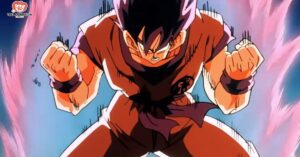Ant-Man and the Wasp: Quantumania is aptly titled: Between the Quantum Realm, the Ant-Man family, and the time-traveling warlord Kang the Conqueror, there’s a lot going on. And that’s on top of the movie literally ending on an open question — it’s designed to be confusing, because it’s opening up so many future MCU stories. This is all before the two post-credit scenes.
What does it all mean for the future of Marvel universe, which is barrelling toward Avengers: The Kang Dynasty and Avengers: Secret Wars? Let’s see if we can untangle these quantum threads without starting any… Kangtroversy.
[Ed. note: This piece contains spoilers for Ant-Man and the Wasp: Quantumania, Doctor Strange in the Multiverse of Madness, and Loki.]
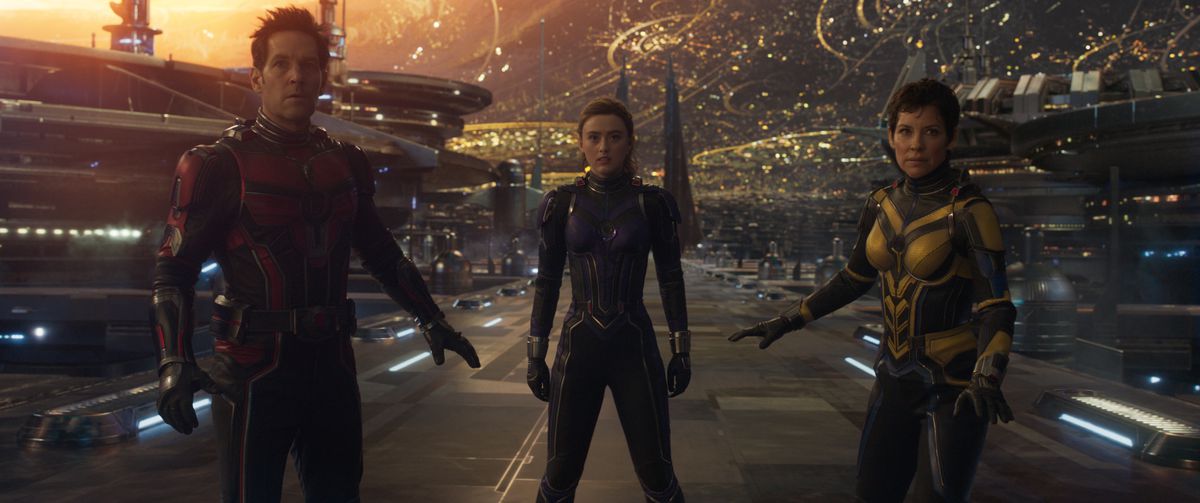
Quantumania was billed as our first real intro to Jonathan Majors’ Kang the Conqueror, the time-traveling warlord who will function as the final boss for the next three years of the Marvel Cinematic Universe. So it’s reasonable to be a little confused when he gets his butt mega-handed to him at the end.
Kang gets caught in a shrinky portal that appears to destroy him utterly. All of team Ant-Man makes it out of the Quantum Realm and safely back to normal size. The people of the Quantum Realm are freed from tyranny. And Scott Lang goes back to his happy-go-lucky life.
Or does he?
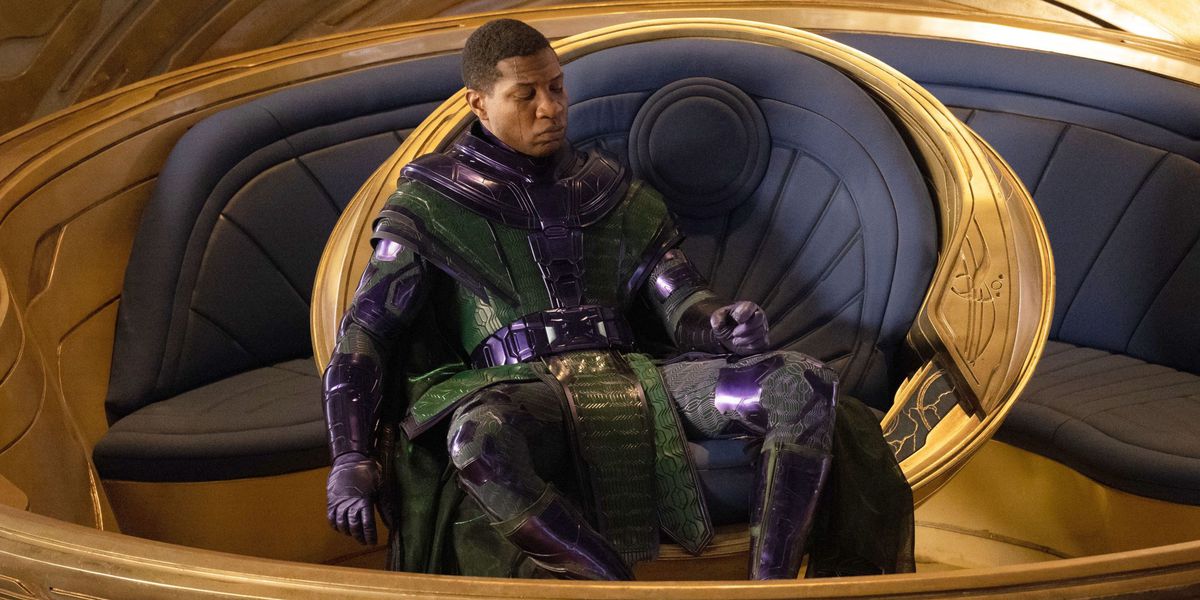
Is Kang really dead?
Polygon spoke to Quantumania director Peyton Reed about giving Kang such a big feature role only to kill him at the end of the story, and Reed confirmed: Kang is dead — long live Kang.
Reed said the idea was for this movie’s Kang to be “the most feared, most formidable Kang of all of them” — but that part of that setup was creating the future menace of all the alternate Kangs seen in the film’s mid-credits scene.
“At the beginning of the movie, the whole [Ant-Man] family has secrets that Scott doesn’t know about,” Reed told Polygon. “By the time you get to the end of the movie, all those secrets are out. But now Scott Lang has a secret, and the secret is this self-doubt. Kang — We got him, he’s not going to get out of the Quantum Realm. But wait a second, Kang also said that if he didn’t get out, all these other bad versions of him were coming. Did I mistakenly doom the entire population of Earth? Introducing this self-doubt to Scott, to see how that might play out in the future of the MCU, that was a fun aspect of it to us. It’s this hanging note at the end of the movie.”
It seems that Quantumania’s Kang was just a red herring, and that arena full of wild Kang variants is the real threat.
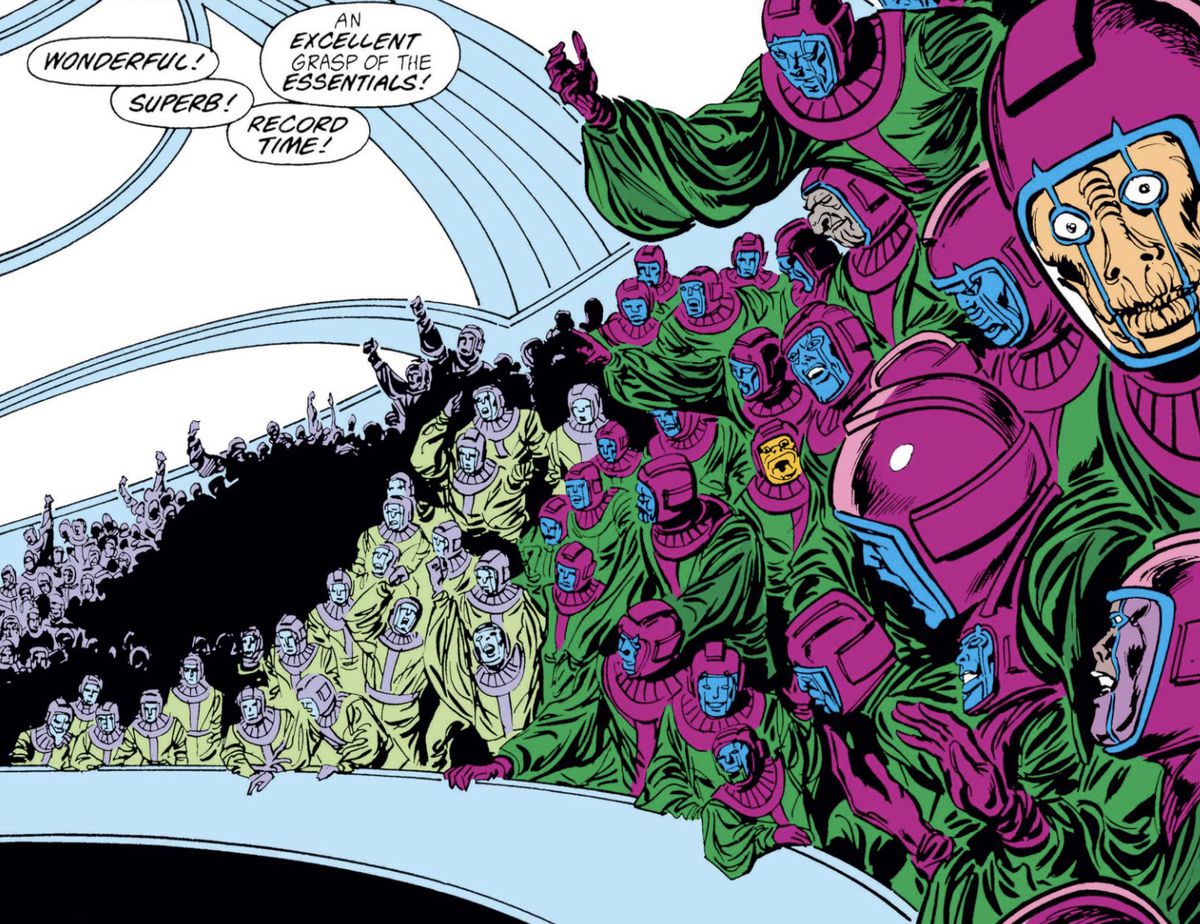
What was up with all those Kangs?
There’s lots of comic book precedent for a Council of Kangs, but for our purposes here, we’ll stick to what the MCU has told us.
The very first Kang variant we met was He Who Remains, the secret boss of the Time Variance Authority, as seen in Loki. He had dedicated himself to tight policing of time, pruning away any variant choices that diverged from the “Sacred Timeline” in which he was the only version of himself who had figured out how to cross the barriers between parallel universes. He warned Loki and Sylvie that if they killed him, and restored free will to the universe, the timeline would splinter into a multiverse, and eventually the many variants of He Who Remains would meet, clash, and spiral into a time war that would destroy all of existence.
In the show’s finale, Sylvie kills He Who Remains, and Loki winds up in the subsequent timeline in which a Kang the Conqueror openly rules the Time Variance Authority, the Sacred Timeline has fractured into an infinite multiverse of infinitely variant parallel worlds, and he’s the only person who remembers that it was ever any different.
The Kang in the Quantum Realm mentions those infinite Kang variants, saying that they banished him to the Quantum Realm because he disagreed with them on the subject of an oncoming threat. He warned Ant-Man and co. that if he was not allowed to rebuild his ship and escape the Quantum Realm, there would be no one to stop the other variants, and disaster would follow. But he was pretty vague on what the other variants wanted to do, why he thought it was wrong, and what exactly the disaster would be!
Then, in Quantumania’s credits scene, we get some further conversation between three Kangs at the Council of Kangs. The info we get is still pretty vague, but there’s another important clue here. The Kangs have convened to discuss Incursions.
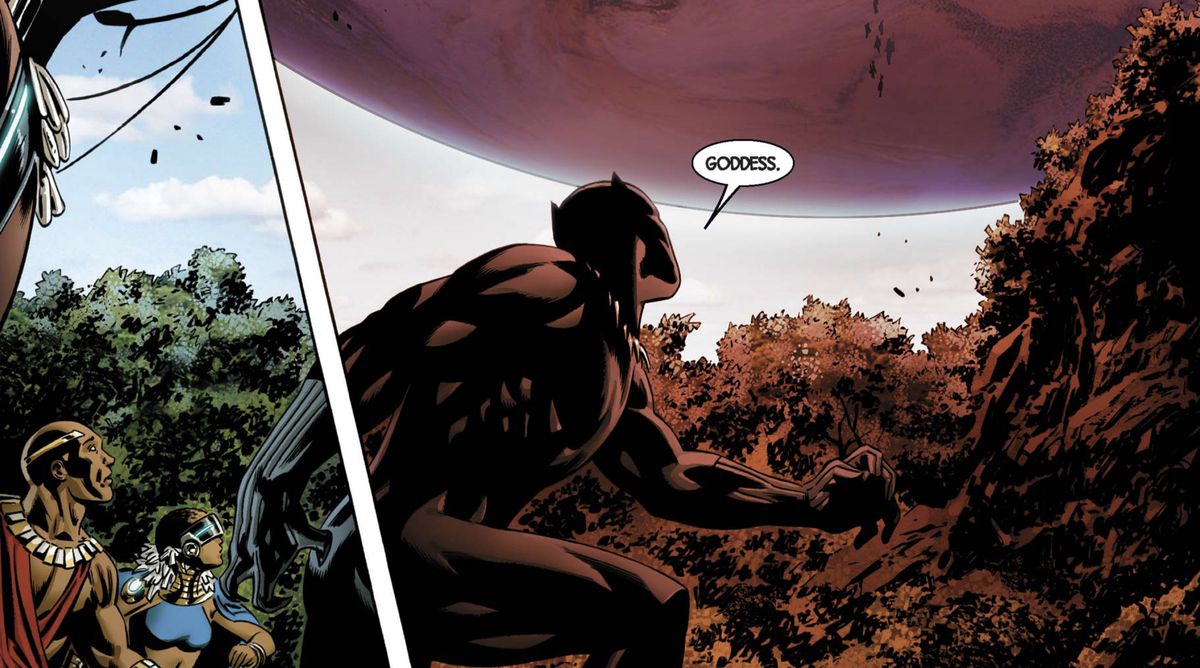
Wait, what are Incursions?
The MCU introduced the idea of Incursions — a cosmic natural disaster in which two universes in the multiverse begin to collide, with the potential to destroy one or both of those universes — in Doctor Strange in the Multiverse of Madness. Stephen Strange visited one universe in which his variant had inadvertently caused an Incursion and been executed for it. In another, he found the remnants of yet another Incursion event where the only person left alive was his own twisted variant. Then, in one of the film’s credits scenes, Strange was accosted by a woman named Clea, who told him that he had caused an Incursion and she’d come to make him fix it.
We don’t know much more about Incursions in the MCU, but in the comics, they were invented by writer Jonathan Hickman as the underpinning threat that eventually led to the 2015 Secret Wars event, which the Marvel Cinematic Universe is headed to adapt in 2026’s Avengers: Secret Wars. In the comics, however, superheroes don’t cause Incursions to happen. They are a multiverse-wide natural disaster, accidentally set into motion by some of Marvel Comics’ nearly omnipotent cosmic beings.
The MCU could be looking to make Incursions more of a villainous plot than an entropic reaction, and the Council of Kangs may be how that will happen.
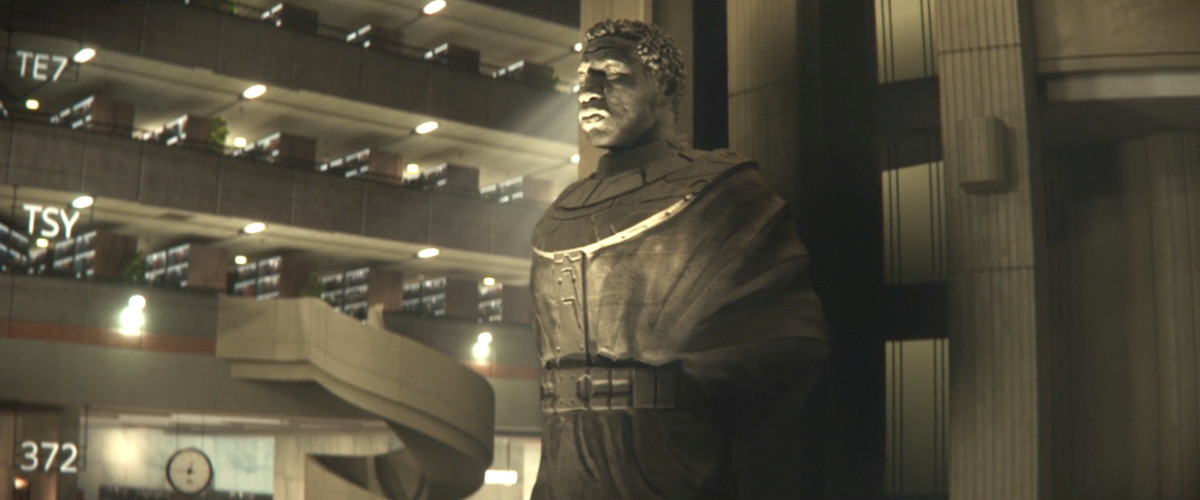
When will we see Kang again?
The next place we’ll see a Kang variant seems to be in the second season of Loki, according to Ant-Man and the Wasp: Quantumania’s credits sequence. And it stands to reason he’ll appear in other upcoming Marvel shows and movies before 2025’s Avengers: The Kang Dynasty.
Maybe we’ll see him in The Marvels this November, or Shang-Chi 2, or Agatha: Coven of Chaos in winter 2023 — but Marvel has yet to reveal that Jonathan Majors has signed up for any of those upcoming projects. So for now: Loki season 2 it is.
- SEO Powered Content & PR Distribution. Get Amplified Today.
- Platoblockchain. Web3 Metaverse Intelligence. Knowledge Amplified. Access Here.
- Source: https://www.polygon.com/23603178/ant-man-quantumania-end-scenes-kang-incursions
- 2023
- About
- according
- adapt
- All
- allowed
- Another
- Arena
- as
- aspect
- Authority
- barriers
- because
- before
- beginning
- between
- BIG
- Black
- Black Panther
- book
- caught
- Cause
- caused
- choices
- cinematic
- coming
- confusing
- Conversation
- could
- Council
- Creating
- Credits
- dead
- dedicated
- designed
- destroy
- DID
- different
- disaster
- Doom
- Dynasty
- earth
- Event
- EVER
- exactly
- family
- Feature
- figured
- filled
- Final
- First
- Fix
- follow
- formidable
- Free
- full
- fun
- function
- further
- future
- Gaming
- Giving
- going
- headed
- here
- Horror
- How
- How To
- HTTPS
- huge
- i
- idea
- important
- info
- introduced
- IT
- Jonathan
- Kills
- Led
- Life
- Little
- Live
- Long
- looking
- make
- MAKES
- Marvel
- May
- menace
- mentions
- might
- more
- movie
- Movies
- multiverse
- Natural
- nearly
- New
- Newton
- normal
- November
- One
- open
- opening
- Other
- own
- part
- Paul
- People
- place
- plato
- plato data intelligence
- platodata
- platogaming
- play
- Polygon
- population
- Portal
- potential
- pretty
- projects
- purposes
- Quantum
- question
- reaction
- Real
- realm
- red
- remains
- reveal
- role
- Ruler
- rules
- safely
- Said
- season
- season 2
- Secret
- seems
- set
- signed
- Signed Up
- Size
- sky
- So
- Space
- Starting
- statue
- Stephen
- Steve
- still
- Stories
- Story
- subject
- subsequent
- such
- superheroes
- Supreme
- talking
- Team
- The
- time
- timeline
- top
- Tyranny
- universe
- up
- us
- version
- versions
- wait
- war
- What
- WHO
- winds
- Winter
- woman
- Worlds
- writer
- years
- zephyrnet
